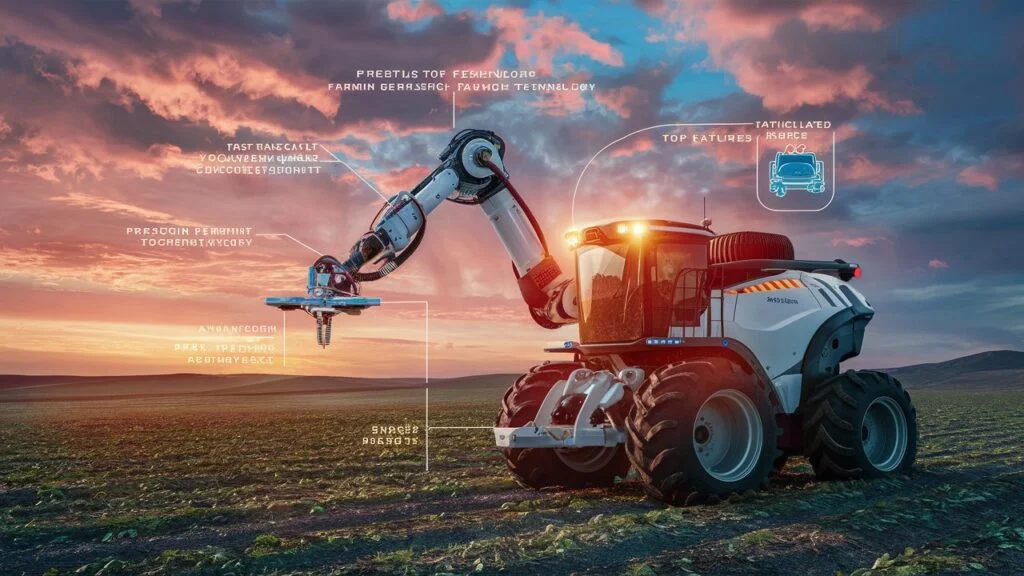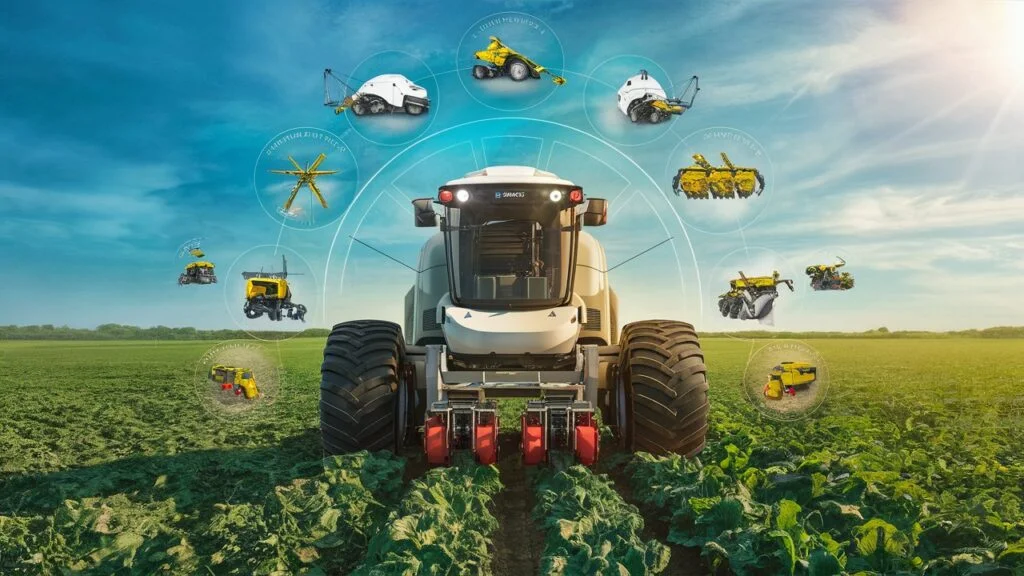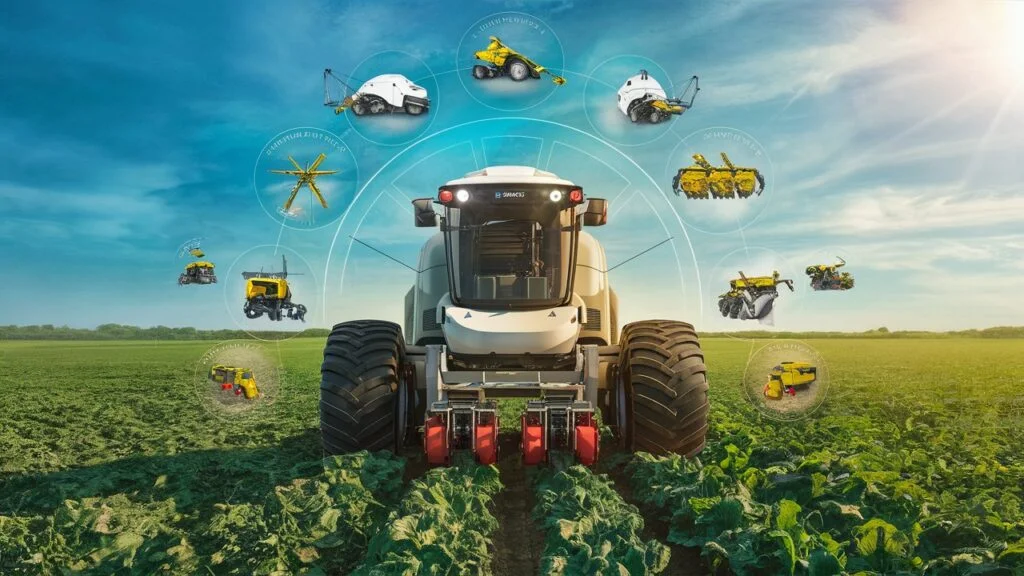In today’s rapidly evolving agricultural landscape, the integration of technology has become indispensable. Agricultural robots, also known as ag robots, are revolutionizing farming practices by offering advanced capabilities to streamline operations, enhance productivity, and minimize environmental impact.

Precision Agriculture
Precision agriculture entails the use of technology to optimize farming practices and resource utilization. It involves precise management of inputs such as water, fertilizers, and pesticides to maximize yields while minimizing waste. Agricultural robots play a crucial role in enabling precision agriculture through their ability to perform tasks with unprecedented accuracy and efficiency.
Top Features Required in Ag Robots
Robustness and Durability
Agricultural robots operate in harsh and demanding environments, including rugged terrain and adverse weather conditions. Therefore, they must be robustly built to withstand such challenges. High-quality materials and durable construction methods are essential to ensure the longevity of ag robots and minimize maintenance downtime.
Autonomous Navigation and Obstacle Avoidance
Navigation in complex farm environments poses significant challenges for agricultural robots. Advanced sensors and algorithms enable these robots to navigate autonomously while avoiding obstacles such as crops, rocks, and farm equipment. This capability ensures smooth and efficient operation in the field.
Precision Spraying and Planting
Accurate application of fertilizers, pesticides, and seeds is critical for optimizing crop growth and minimizing resource wastage. Agricultural robots equipped with precision spraying and planting technologies can precisely target inputs, resulting in improved crop health and higher yields.
Data Collection and Analysis
Agricultural robots are equipped with a plethora of sensors for collecting data on soil conditions, crop health, and environmental parameters. Advanced analytics tools analyze this data to provide valuable insights for decision-making, such as optimizing irrigation schedules and detecting early signs of pest infestation or disease.
Adaptability to Various Crops and Terrains
Farms grow a wide variety of crops, each with its own unique characteristics and requirements. Agricultural robots must be adaptable to different crop types and field conditions to perform effectively across diverse agricultural settings. Customization options enable farmers to tailor robots to suit their specific needs.
Integration with Farm Equipment and Systems
Seamless integration with existing farm machinery and software is essential for maximizing the efficiency and productivity of agricultural operations. Interoperability allows agricultural robots to collaborate with other equipment such as tractors, drones, and irrigation systems, facilitating coordinated and synchronized tasks.
Cost-effectiveness and Scalability
While the initial investment in agricultural robots may seem significant, the long-term benefits often outweigh the costs. Increased efficiency, reduced labor expenses, and optimized resource utilization contribute to substantial savings over time. Moreover, robotic solutions can be scaled to meet the needs of farms of all sizes, from small family-owned operations to large commercial enterprises.

Environmental Sustainability
Agricultural robots play a crucial role in promoting environmental sustainability by minimizing chemical usage, reducing soil compaction, and conserving water and energy resources. Their precise application capabilities help minimize chemical runoff and environmental pollution, contributing to healthier ecosystems and sustainable farming practices.
Conclusion
In conclusion, the adoption of agricultural robots with the top features discussed above holds immense promise for the future of farming. By leveraging advanced technologies such as autonomous navigation, precision spraying, and data analytics, farmers can optimize productivity, reduce environmental impact, and ensure the long-term sustainability of agricultural practices.
FAQs
- What are the main benefits of using agricultural robots? Agricultural robots offer numerous benefits, including increased efficiency, improved productivity, and reduced labor costs. They also enable precise management of inputs, leading to higher crop yields and minimized environmental impact. For more details, check out our farm robots article.
- How do agricultural robots contribute to sustainable farming practices? Agricultural robots promote sustainable farming practices by minimizing chemical usage, optimizing resource utilization, and reducing environmental impact. Their precision capabilities help conserve water and energy resources while minimizing soil compaction and erosion. Learn more about sustainable practices in our ag robots article.
- Are agricultural robots suitable for small-scale farms? Yes, agricultural robots are suitable for farms of all sizes, including small-scale operations. They can be scaled to meet the specific needs and budget constraints of individual farmers, offering customized solutions for improved efficiency and productivity. Discover how robots can benefit small farms in our robot farmer article.
- Can agricultural robots operate in adverse weather conditions? Agricultural robots are designed to operate in a variety of weather conditions, including rain, wind, and heat. However, extreme weather events may pose challenges, and additional precautions may be necessary to ensure safe and efficient operation. For more on this, see our robots in agriculture article.
- What advancements can we expect in agricultural robotics in the near future? In the near future, we can expect further advancements in agricultural robotics, including enhanced autonomy, improved sensor technologies, and increased connectivity. These advancements will further enhance the capabilities of agricultural robots and drive innovation in the farming industry. Stay updated with the latest trends in our robotics in agriculture article.
For more information on various types of agricultural robots and their applications, you can read our articles on robotic milking systems, robotic weeding, seeding robots, and robotic harvesting.
“`
